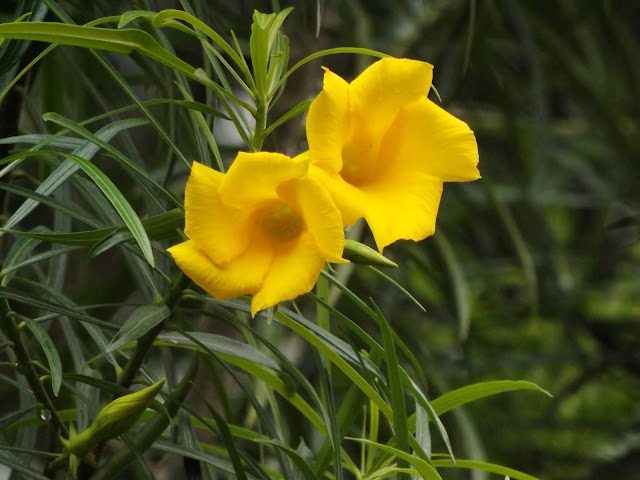Kolkey or Yellow oleander, Cascabela thevetia
Kolkey or Yellow oleander (Cascabela thevetia, family: Apocynaceae) is a small evergreen tree with profuse branches and soft stem. Bark is whitish grey and smooth. The whole plant emits milky latex and it is poisonous. The plant is originated in tropical America, Peru and Brazil. The tree is believed to have come to this country in the fifteenth century by Portuguese.
Other names: Holud korobi, Shonnyashi phul.
The tree is poisonous but it is one of the most beautiful trees in the world. The whole world is fascinated by its nice-scented beautiful flowers. As an ornamental tree it is planted in temples, garden and parks in Bangladesh. It is planted as homested tree in the country too.
Leaves are green, glabrous, linear, 10-15 cm long.
Flowers are funnel-shaped, sweet-scented; sepals 5, petals 5. Petals are twisted rightwards. Though it is called Yellow oleander in English but its flowers are of three colors--yellow, reddish orange and white. Flowering occurs round the year.
Fleshy fruit is almost ovoid, 4-5 cm wide, 2-seeded. Seeds are poisonous. Raw fruits are green but turn dark when ripe. These mature in late autumn. The plant is propagated by seeds and cuttings.
Root, bark, leaf and sap are used in scabies, intestinal gas and tetanus.
Other species of Apocynaceae family in the site






6B9EE60B77
ReplyDeleteBeğeni Satın Al
En İyi Takipçi
Tiktok Takipçi Arttırma